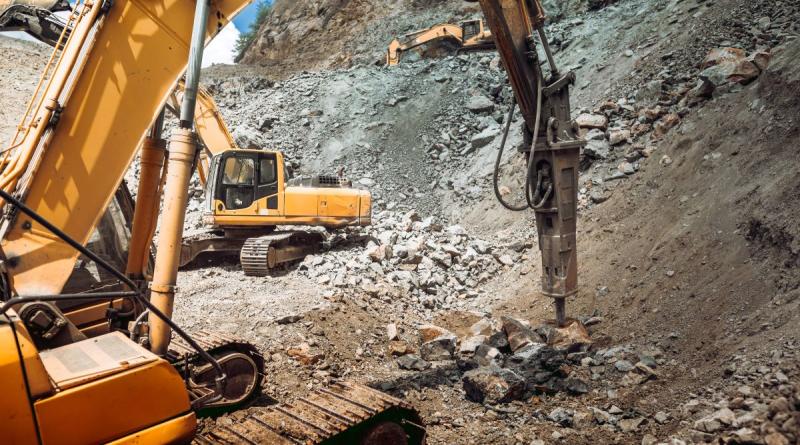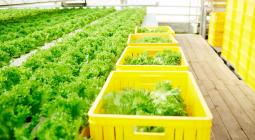Singapore mining consortium inks a US$15bn deal to develop Guinea iron ore mine

The three-way deal could potentially put 100m tonnes of iron ore on the market every year
A US$15bn deal has been reached between the Guinean government, Australian mining giant Rio Tinto, and a consortium led by Singapore-based Winning International Group to resume the development of Guinea’s huge Simandou iron ore deposit. The ruling military junta had ordered miners to cease all activities at the mine in mid-March on the grounds of protecting ‘national interest’. But within a matter of days, minister of mines Moussa Magassouba announced that an agreement had been reached after the various parties managed to resolve outstanding disputes over infrastructure development. It is widely believed that the military junta that runs the country had delayed the project to compel investors to put up the infrastructure needed to realise the project. This includes developing a new deep-water port from which to export the iron ore and a 670 km railway track connecting this new port to the mining site located in the Simandou mountains of Guinea’s Nzerekore region. The budget estimates for this infrastructure development is said to be around US$15bn.
Under the new terms of agreement, the government of Guinea will not only acquire a 15% stake in the railway, port, and the mine but all the new infrastructure put in place would become the property of the state following the completion of the project. The government is pushing the relevant parties to complete this infrastructure development by the end of 2024 and begin producing iron ore for export by 31 March 2025.
The 4bn tonne deposit makes Simandou one of the largest iron ore reserve in the world. The mine is expected to produce over 100 million tonnes of iron ore per annum, giving it an estimated 40-year lifespan. The site is divided into four sections. The rights to Blocks 1 and 2 are held by the SMB-Winning consortium which comprises Guinean mining firm Société Miniere de Boke (SMB), Singapore’s Winning Shipping (a subsidiary of Winning International Group), France’s United Mining Supply, and Chinese mining company Shandong Weiqiao (a subsidiary of the China Hongqiao Group). Notably, this consortium is also 10% owned by the government of Guinea. The first two blocks are considered to be particularly rich and could contribute 60% of the annual output. The remaining 40% of the output will come from Blocks 3 and 4, the rights to which are owned in a partnership between Rio Tinto, which owns a 45.05% stake in the blocks, Chinese mining firm Chinalco which owns 39.95%, and the Guinean government which holds the remaining 15%. Notably, Chinalco also owns around 14% of Rio Tinto itself.
China is particularly invested in the Simandou project not only due to the presence of Chinese firms such as the state-backed Chinalco and the China Hongqiao Group but also because these substantial reserves present an opportunity for China to reduce its dependence on Australian iron. China imports over a billion metric tonnes of iron every year and an estimated 60% of this comes from Australia. Beijing has been looking to reduce its dependence on Canberra as tensions between the two have escalated over security and maritime rights.
Guinea’s iron ore offers China a chance to pivot away from Australia while also ensuring access to higher-quality iron. The Simandou reserves are estimated to have a high Fe quality of 66 to 68%. The Simandou mine has attracted investor interest ever since deposits were discovered in 2002. While the ore itself is considered comparatively easy to extract, the site itself is very remote and difficult to access. It is also home of the critically endangered Western Chimpanzees, many of whom live in the area where the iron deposits are located. The timelines set by the government are ambitious and are unlikely to be met despite the support and expertise of the major corporations from China, Singapore, and Australia involved in the project. In addition, the project has been repeatedly impacted by political instability in Guinea, which has included coups in 2008 and 2021 – both of which were preceded by periods of widespread unrest. This instability makes for a difficult operating environment and one in which government officials and changes of power have repeatedly delayed or disrupted planned mining developments such as the Simandou project. This operating risk means that the development of the Simandou project could very well face further delays and disruptions before the planned start of production in 2025.
References
'Rio Tinto’s board backs Simandou iron ore mine in Guinea', Mining.com, 08 April 2022.
'The Winning Consortium Signed A New Framework Agreement With The Government Of Guinea And Rio Tinto Simfer For The Co-Development Of The Simandou Project', Winning Consortium Simandou, 01 April 2022.
'Guinea’s junta signs US$15 billion deal for vast Simandou iron ore site', South China Morning Post, 28 March 2022.
'Guinea and Rio Tinto sign deal to resume Simandou iron ore development', Mining Technology, 28 March 2022.
'Ground Breakers: Rio Tinto’s Simandou development is back on the cards after Guinea deal', Stockhead, 28 March 2022.
'Guinea reaches deal with miners to resume Simandou iron ore development', Reuters, 27 March 2022.
'Australian iron imports to China slow but ‘roaring’ demand likely to return, analysts say', South China Morning Post, 4 February 2022.
'Guinea Coup – the Fall of Alpha Conde', The Africa Report, 07 September 2021.
'SMB-Winning aims to bring Guinea's Simandou iron ore to market in 2025', Reuters, 16 October 2020.
'Guinea not flexible on Simandou infrastructure – minister', Reuters, 06 February 2019.
https://www.ntu.edu.sg/




